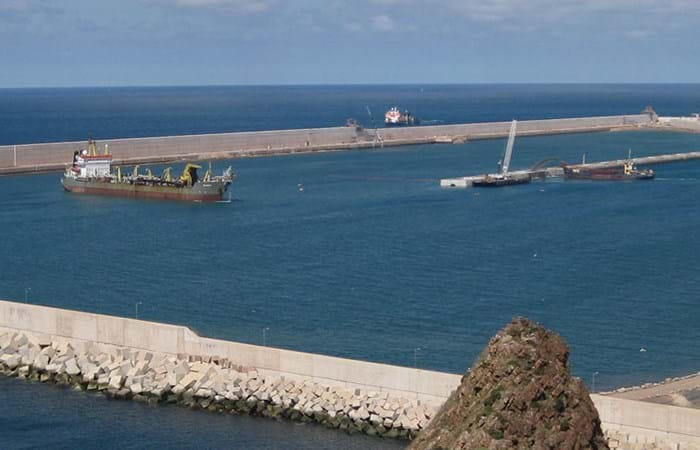The Spanish port of Gijón on the Bay of Biscay processes more than 12 million tonnes of bulk goods annually. With the expansion of global trade and increasing ship sizes, the terminal was lacking capacity to handle the traffic. The maximum draft for the ships of 18 meters is another obstacle to the development of the port. So the Port Authority of Gijón developed a plan for additional modern facilities in an area measuring 145 hectares to the north of the existing port. This includes a bulk terminal with a transfer capacity of more than 25 million tons and a storage area measuring 60 hectares for a maximum of 2 million tons of coal and iron ore a year.
The dredging projects amounted to approximately EUR 70M. Boskalis/Sedra – as partner in UTE Dragado Gijón – took on approximately 50% of that total. Because of the storms in the Bay of Biscay, it is only possible to work efficiently in the summer months. The first phase of the project began in the summer of 2005 and it comprised approximately 1M m3 of trench dredging using a medium-sized TSHD for the foundations of the caisson quay walls. After the construction of the quay walls, work started on the new harbor area. The 2009-2010 operations will result in approximately 17M m3 for land reclamation. Two medium-sized TSHDs delivered the first 10M m3 of sand to shore in 2009.

